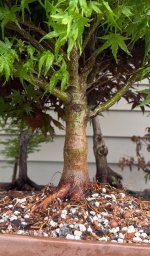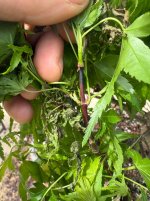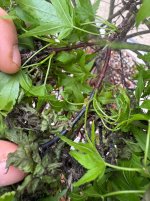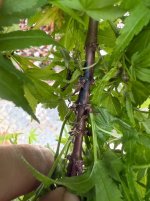99 Mile Creek
Shohin
I finally got ahold of a Sharp’s Pigmy. Unsure if I should start trimming back or not, I put of that on hold till I could do a little more research (pretty sure winter/early spring is best for major pruning?) and decided to get rid of the dead branches.
When removing the dead foiling, I noticed it was not only dead in some places, but jet-black dead. I thought maybe this is dieback from damaged branches at first. Then thought it might be root rot. Wasn’t sure.
I repotted it in some bonsai substrate to introduce more oxygen to the roots. And there was some root rot. Nothing significant that didn’t get reduced in order to fit into the pot.
My question would be, is the dead black foliage on a Sharp’s Pigmy a result of root rot, or is it die back, similar to other trees like a BRT? Or is it a fungus I should be spraying for?
I think this is out of the window for pruning? From what I gather, I should probably look to reduce this quite a bit—being a long-term investment sort of thing—but also gradually so as to not shock the tree?
Any and all advice on the Sharp’s Pigmy, I’m all ears. Really glad I was able to find one at my local nursery this year. Thanks
When removing the dead foiling, I noticed it was not only dead in some places, but jet-black dead. I thought maybe this is dieback from damaged branches at first. Then thought it might be root rot. Wasn’t sure.
I repotted it in some bonsai substrate to introduce more oxygen to the roots. And there was some root rot. Nothing significant that didn’t get reduced in order to fit into the pot.
My question would be, is the dead black foliage on a Sharp’s Pigmy a result of root rot, or is it die back, similar to other trees like a BRT? Or is it a fungus I should be spraying for?
I think this is out of the window for pruning? From what I gather, I should probably look to reduce this quite a bit—being a long-term investment sort of thing—but also gradually so as to not shock the tree?
Any and all advice on the Sharp’s Pigmy, I’m all ears. Really glad I was able to find one at my local nursery this year. Thanks







